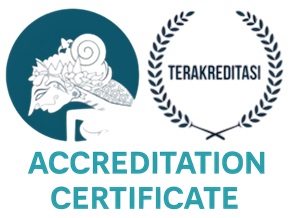The Application of Specific Instructional Objectif in Lesson Plans Designed by Public Senior High School English Teachers Based on The Taxonomy Bloom
Abstract
The objective of this study was to find out the types of specific instructional objectives applied by English teachers of public Senior High School in Bengkulu and to find the differences between senior and junior teachers specific instructional objectives in their lesson plans. The population of this research was all English teachers of Public Senior High School, they were 26 English teachers. This research employed total sampling that divided based on teachers experience less than ten years and more than ten years. The instrument of the research was a check list. It was constructed based on the combined theory of Suciati and Davies. The data were analyzed by using percentage. The result of the research in category teachers experience more than ten years was that teachers applied the characteristic knowledge 36.39, comprehension 7.87, application 17.70, analysis 9.51, synthesis
18.36, evaluation 10.16. while less than ten years experience teachers applied knowledge 50, comprehension 8.1, application 9.7, analysis 9.7, synthesis 16.1, evaluation 6.5. Both experience more and less than ten years teachers applied knowledge as dominant category in designing their lesson plans. Experienced teachers had 36.39 %. While less experience teachers had 50 %. The second position, experienced teachers applied synthesis 18.36%. and less experience teachers applied synthesis 16.1%.
Downloads
References
Sarwono, J. (2006). Metode Penelitian Kuantitatif & Kualitatif. Yogyakarta: Graha Ilmu.
Davies, I. K. (1976). Objectives in Curriculum Design. Indiana University: Mc Grew Hill.
Gay, L. (1990). Education Research. New York: Mc Millan.
Ibrahim and Syaodihs, N. (1996). Perencanaan Pengajaran. Jakarta: Renika Cipta.
Rooijekkers (1980). Mengajar Dengan Sukses. Jakarta : PT. Gramedia.
Copyright (c) 2021 Journal Of Dehasen Educational Review

This work is licensed under a Creative Commons Attribution-ShareAlike 4.0 International License.

This work is licensed under a Creative Commons Attribution-ShareAlike 4.0 International License.









